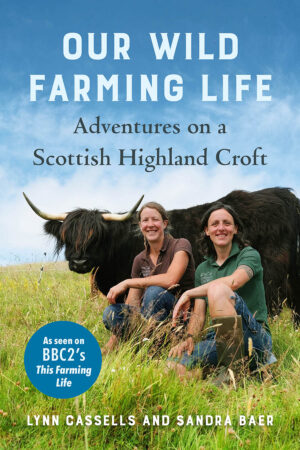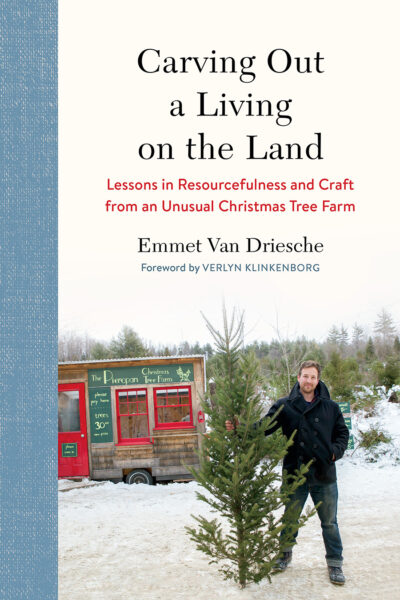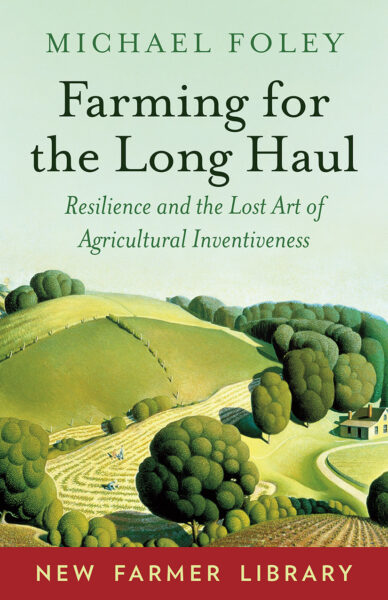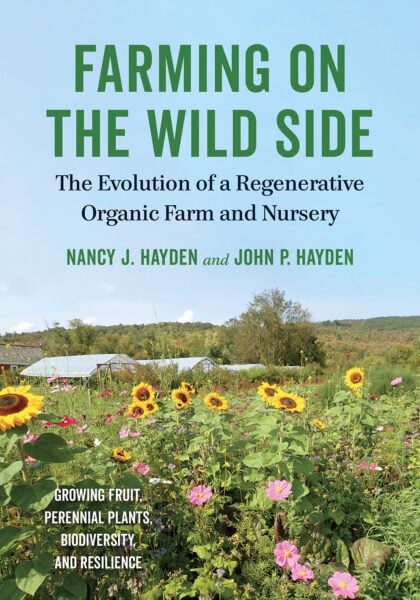So What Exactly IS a Croft?
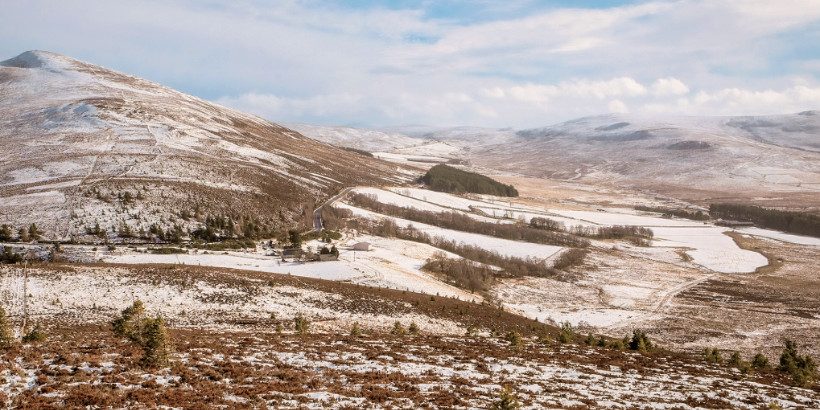
If you’re an American, you may have never heard of a “croft.” Before we published Our Wild Farming Life, a number of our employee-owners didn’t know what a croft was either. Thankfully, Sandra Baer and Lynn Cassells give us a rundown of what exactly a croft is, and a brief history of crofting, too.
The following is an excerpt from Our Wild Farming Life by Sandra Baer and Lynn Cassells. It has been adapted for the web.
A croft is an agricultural holding, usually small in size and averaging around five hectares, and it is unique to Scotland. Crofting has been a way of life here for many years as historically people worked small pockets of land with a mix of arable and pasture to provide food primarily for themselves, but living very much as part of a community. This traditional livelihood was the epitome of subsistence existence, where daily life was about survival in the truest sense and where the focus was on having enough food, water and heat to get by.
During the second half of the eighteenth century, a period of social unrest that became known as the Highland Clearances rippled through the north of Scotland. The rich landowners, who dominated the vast majority of the land, started to clear the tenant farmers from their holdings in favour of large-scale sheep pastoralism, which was deemed at the time to provide better financial return for less effort. The tenants were resettled to coastal areas onto small strips of land with poor soils, where they had just enough space to produce most of their subsistence from, but not quite enough to survive on. This often forced the people to make extra income from the fishing and kelp industries or from any work that was offered on estates, thus providing landlords with cheap, readily available labour.
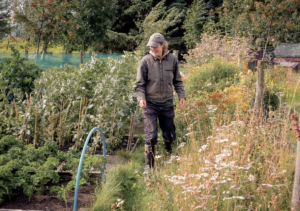 The first half of the nineteenth century brought further hardship as the new settlements, known as crofting townships, were vastly overpopulated, resulting in widespread famine as they could not support the numbers of people that had been forcibly resettled. The problem was further exacerbated by a devastating potato blight, which started around 1846 and lasted for ten years.
The first half of the nineteenth century brought further hardship as the new settlements, known as crofting townships, were vastly overpopulated, resulting in widespread famine as they could not support the numbers of people that had been forcibly resettled. The problem was further exacerbated by a devastating potato blight, which started around 1846 and lasted for ten years.
The landowners began a programme of ‘assisted emigration’ in an attempt to depopulate areas by providing tenants passage abroad, particularly to North America and Australia. While this had fairly significant take-up, eventually the people on the land decided to fight back, signalling the start of the Crofter’s War in 1882, which saw a series of violent conflicts between crofters, who wanted more rights, and the authorities and landowners.
To address the growing unrest, the British government appointed Lord Napier to undertake a review of the situation, which led to the Crofters Holdings (Scotland) Act of 1886. Lord Napier was widely regarded as having sympathy for the cause of the people and, through the new legislation, ensured that those in the legally defined crofting counties, located in the north and west of Scotland, would have the security of tenure. This meant that they could no longer be evicted from their land if they paid their rents and kept the land in good working order.
However, many crofters were unhappy that the act didn’t give them all the rights they believed they were entitled to and crofting law has been subject to a number of changes over the years. Perhaps the most significant was the Crofting Reform (Scotland) Act 1976, where tenant crofters were given the opportunity to buy their land, the price dictated by the total value of the rent for a fifteen-year period. This gave a number of crofters even further security as they could become owner-occupiers of their land, an opportunity that had been hard won by them through decades of fighting for the rights they duly deserved.
Today, crofting law is mired in complexity and, while it gives protection to those that live on and work the land, in most cases banks will not provide loans or mortgages to assist with the purchase, believing that if the borrower falls into financial difficulty and defaults on payments, the Scottish Government will have first rights to the holding. This has resulted in house plots having to be de-crofted to sit outside of the legislation in order to attract the financial assistance that many require.
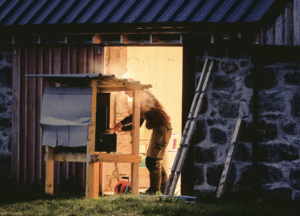 And for those that do manage to secure a tenancy or can become owner-occupiers, there are two main laws that must be adhered to. Firstly, they must live on or within thirty-two kilometres of the croft and, secondly, they must put the croft to use, a statement that has been widened to include a range of land diversification opportunities. If these two laws are not complied with, the Crofting Commission – a non-departmental government body that is the current incarnation of the commission that was established as a result of the 1886 act – has the power to take action to ensure that croft land does not suffer neglect of use or that the properties become absorbed into the blossoming second-home market. Sadly, the latter is becoming the reality as the commission rarely takes action, itself drowning in a mire of government bureaucracy; while crofts are increasingly bought up by those who have no real desire to work the land, instead drawn to the crofting counties by the breathtaking landscapes and a place to escape the ever-expanding urban sprawls to the south.
And for those that do manage to secure a tenancy or can become owner-occupiers, there are two main laws that must be adhered to. Firstly, they must live on or within thirty-two kilometres of the croft and, secondly, they must put the croft to use, a statement that has been widened to include a range of land diversification opportunities. If these two laws are not complied with, the Crofting Commission – a non-departmental government body that is the current incarnation of the commission that was established as a result of the 1886 act – has the power to take action to ensure that croft land does not suffer neglect of use or that the properties become absorbed into the blossoming second-home market. Sadly, the latter is becoming the reality as the commission rarely takes action, itself drowning in a mire of government bureaucracy; while crofts are increasingly bought up by those who have no real desire to work the land, instead drawn to the crofting counties by the breathtaking landscapes and a place to escape the ever-expanding urban sprawls to the south.
One of the biggest challenges faced today in crofting is making it profitable. Early on, we came across a lady called Joyce Campbell, a crofter based on the north coast who was very active on social media, sharing dramatic pictures of her land in Armadale, just thirty miles west of Thurso, and the stories of her day-to-day work. Joyce’s family had been at Armadale Farm for many generations and, when it was her grandparents and father’s turn to take over the land in 1962, they insisted on it having crofting status to access the security that the tenure would provide for the family.
Joyce recalls very fondly her childhood as a bairn (a Scottish term for a child), growing up in a vibrant rural community, full of big characters, where communality was part of everyday life, as people regularly came together to help with seasonal activities including sheep gathering and clipping, hay making and harvesting. While life had many challenges, it was the people and community working together and supporting one another that helped to get through the bad times and celebrate the good.
She explains that since she took over the farm at just twenty years old, life has very much changed. A fact no more poignantly illustrated than by her statement that, ‘The school bus no longer picks up children from Armadale as it used to back in the day,’ – a time when the population was flourishing. Like many crofting townships, the land is starting to fall into neglect as the population ages and the new, incoming blood to the area is heavily dominated by those snapping up the land as it becomes available on the open market for holiday homes, outbidding the few young locals that are left.
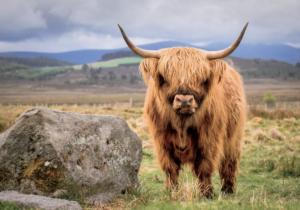 She shares honestly that it’s not just the new arrivals who can pose a threat to the crofting culture, it’s also the very people who have known nothing else that are sometimes struggling to accept and embrace new ways of doing things in a rapidly changing world. They are known affectionately as ‘the old guards’ – those who croft the way they always have done, or as they say, it’s ‘aye been’ – a mentality that is embedded amongst many in the wider farming community as well.
She shares honestly that it’s not just the new arrivals who can pose a threat to the crofting culture, it’s also the very people who have known nothing else that are sometimes struggling to accept and embrace new ways of doing things in a rapidly changing world. They are known affectionately as ‘the old guards’ – those who croft the way they always have done, or as they say, it’s ‘aye been’ – a mentality that is embedded amongst many in the wider farming community as well.
But for new entrants and old guards to survive, they have to carve out a multilayered business model that takes the essence of crofting and makes it relevant for the twenty-first century, and there is no one doing this better and more effectively than Joyce. In addition to her sheep and cattle enterprises, she has a small flock of laying hens, whose eggs she sells locally, and she has embraced the tourism that has flooded the area by renovating the old croft house into holiday accommodation. Her savvy business mind, natural ability for marketing, and genuine warmth for people and crofting have elevated her profile to where she has attracted sponsorship from a range of businesses that financially benefits her day-to-day farming.
Recommended Reads
Recent Articles
Garlic mustard: while known as “invasive,” this plant can be consumed in its entirety and has great nutritional value. Plus, the garlic-flavor is a perfect addition to any recipe that calls for mustard! The following are excerpts from Beyond the War on Invasive Species by Tao Orion and The Wild Wisdom of Weeds by Katrina…
Read MoreEveryone loves a refreshing, fermented, nutritious drink…even your garden! Take your fermentation skills out of the kitchen and into the garden by brewing fermented plant juice. The following is an excerpt from The Regenerative Grower’s Guide to Garden Amendments by Nigel Palmer. It has been adapted for the web. How to Make Fermented Plant Juice Fermented…
Read MoreWant to see your crops thrive this upcoming growing season? The key is in soil fertility and health. Spend time maintaining your soil’s health to guarantee bigger and better crops come harvest time! The following is an excerpt from No-Till Intensive Vegetable Culture by Bryan O’Hara. It has been adapted for the web. What Is Soil Fertility?…
Read MoreMany know the effects of catnip on our feline friends, but few realize that catnip has medicinal effects for humans. From stomach aches to reducing fevers, catnip is a versatile herb with many benefits. The next time you grow this plant for your cat you may end up taking a few cuttings for yourself! The…
Read MoreIt’s time to take control of your seeds and become a plant breeder! Saving your seed allows you to grow and best traditional & regional varieties, and develop more of your own. The following excerpt is from Breed Your Own Vegetable Varieties by Carol Deppe. It has been adapted for the web. Becoming A Plant…
Read More

